Discover how to create a sustainable kitchen without sacrificing style. Learn about eco-friendly kitchen upgrades including appliances, materials, and design tips to reduce environmental impact while enjoying a beautiful cooking space.
Creating a Sustainable Kitchen: The Ultimate Guide to an Eco-Friendly Cooking Space
In today’s world, sustainability is more than just a trend—it’s a necessity. Our daily choices significantly impact the environment, and one of the best places to start making eco-conscious changes is in the heart of the home: the kitchen. Eco-friendly kitchen upgrades combine energy-efficient appliances, sustainable materials, and thoughtful design to reduce waste and minimize environmental impact—all while maintaining a stylish and functional space.
If you’re looking to create a sustainable kitchen, this guide covers everything from energy-efficient appliances to eco-friendly materials and smart design choices that make a difference. Let’s dive in!
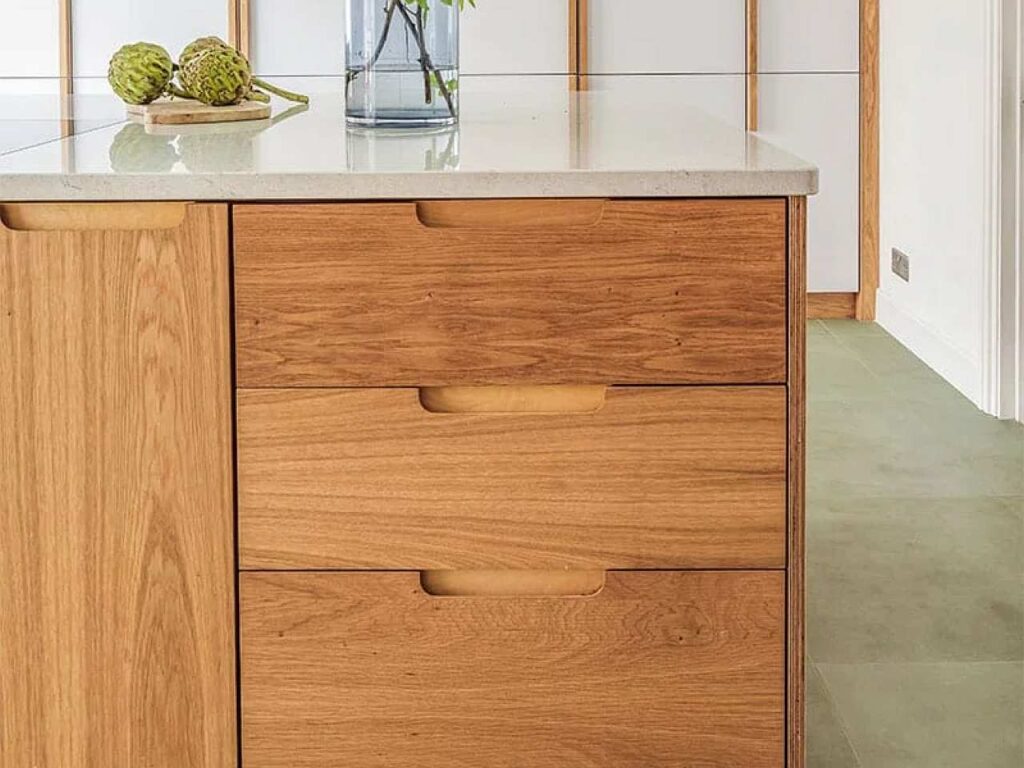
Eco-Friendly Appliances: Energy-Efficient and Water-Saving Solutions
One of the easiest ways to make your kitchen more sustainable is by upgrading to energy-efficient appliances. These appliances consume less electricity and water, helping to lower your carbon footprint and reduce utility bills.
Energy-Efficient Refrigerators and Dishwashers
- Energy Star-Certified Appliances – Refrigerators and dishwashers with the Energy Star label use significantly less energy than standard models.
- French Door Refrigerators – These consume less energy compared to side-by-side models due to their design.
- Counter-Depth Refrigerators – These sit flush with cabinets, improving insulation and reducing energy waste.
Estimated Costs:
- Energy Star-certified refrigerator: $1,500-$3,000
- Energy Star-certified dishwasher: $700-$1,200
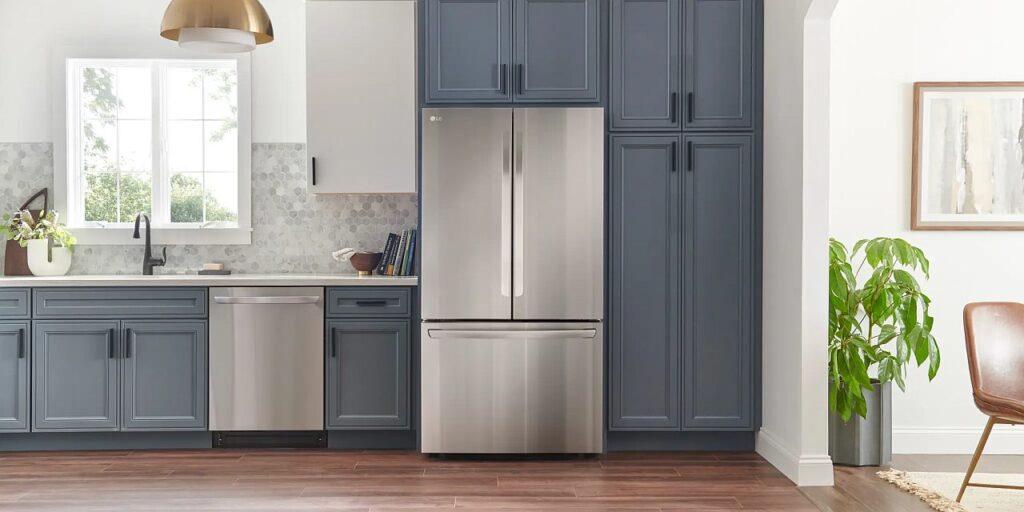
Induction Cooktops and Electric Ovens
- Induction Cooktops – These heat food quickly and efficiently while using less energy than gas stoves.
- Electric Ovens – More energy-efficient than gas ovens, especially when combined with a heat pump water heater.

Estimated Costs:
- Induction cooktop: $1,000-$2,500
- Electric oven: $700-$1,500
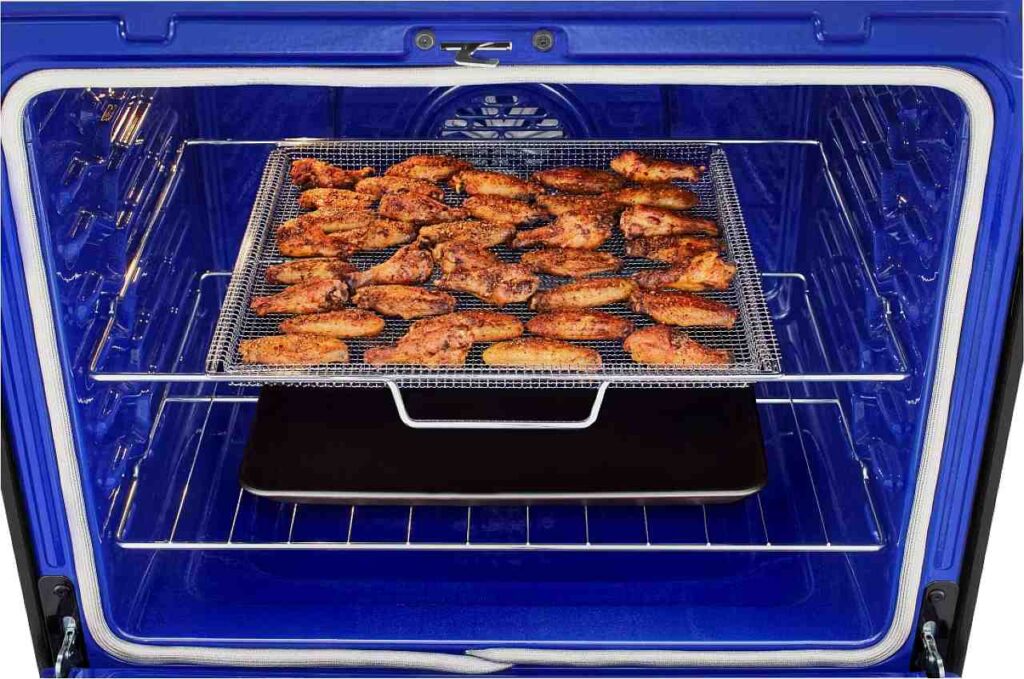
Water-Saving Faucets and Dishwashers
- Low-Flow Faucets – Reduce water consumption while maintaining strong water pressure.
- Water-Efficient Dishwashers – Models that use less water per cycle can save thousands of gallons annually.
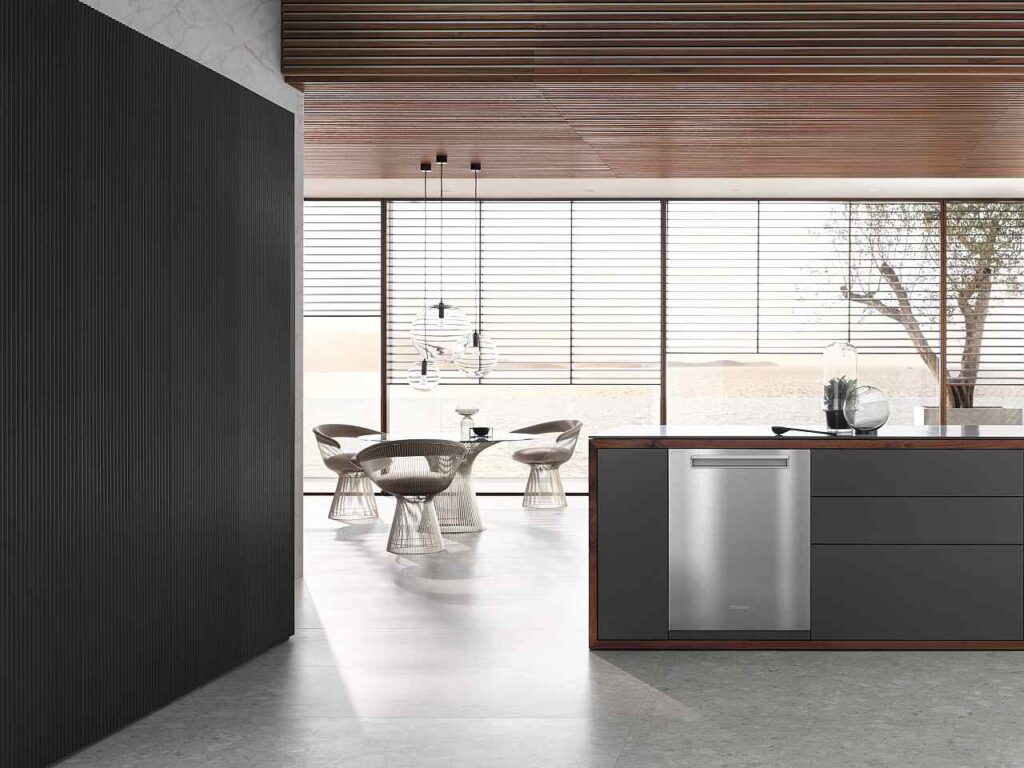
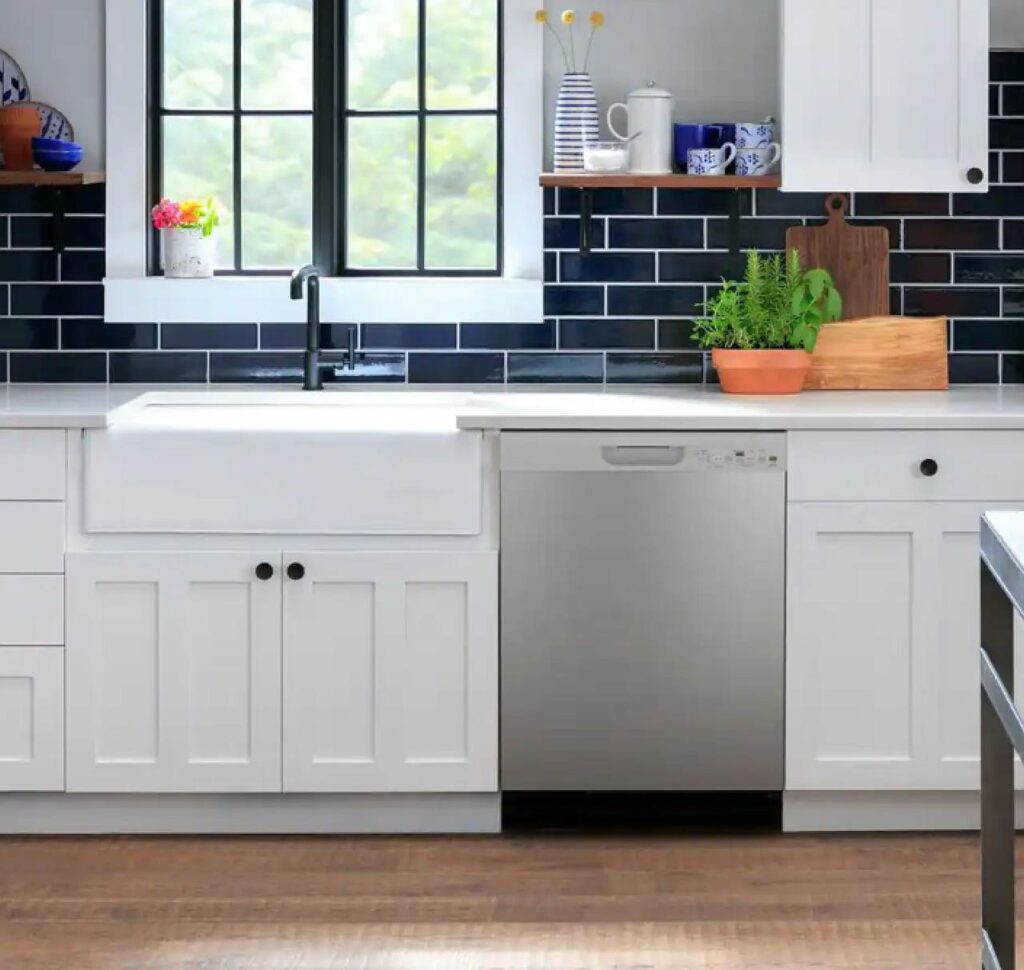
Estimated Costs:
- Low-flow faucet: $50-$150
- Water-efficient dishwasher: $700-$1,200
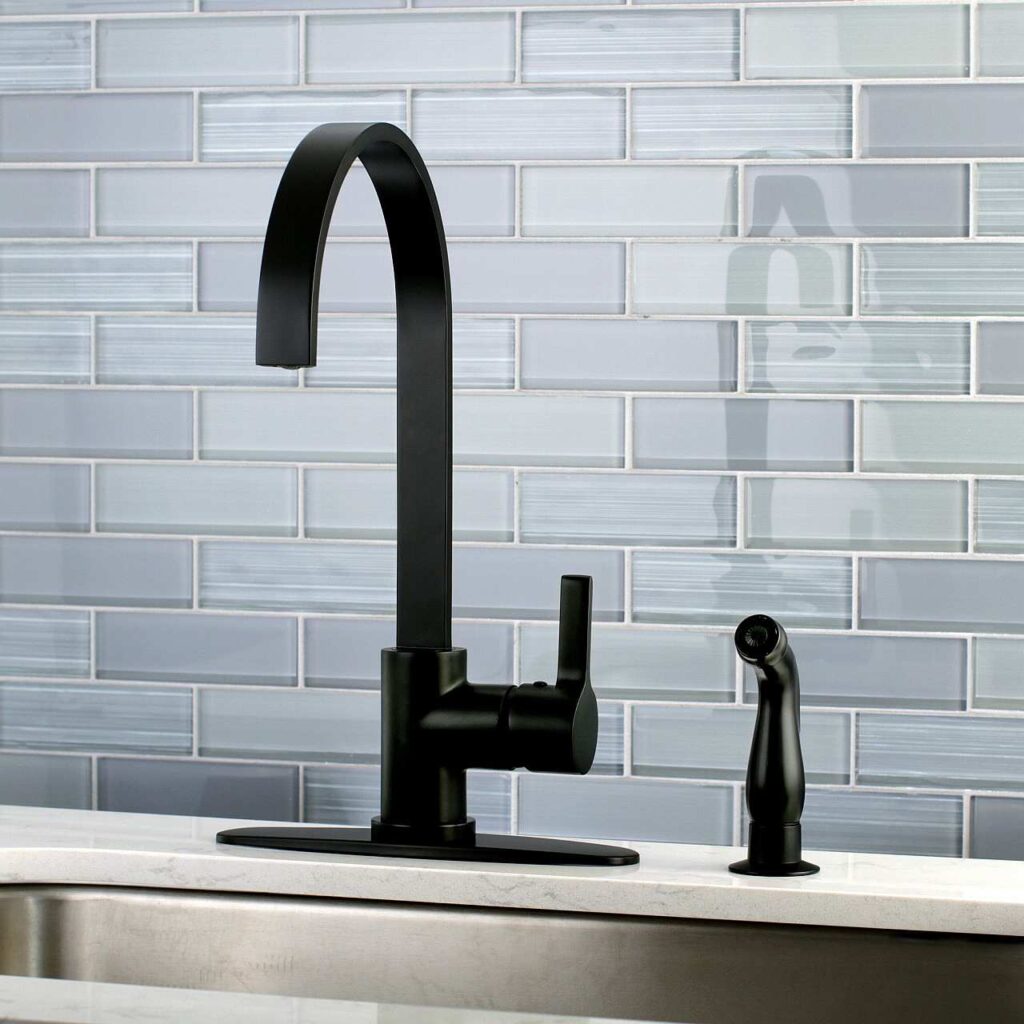
Sustainable Kitchen Materials: Eco-Conscious Countertops, Cabinets, and Paint
Selecting sustainable materials for your kitchen renovation helps reduce waste, repurpose existing resources, and promote a healthier indoor environment.
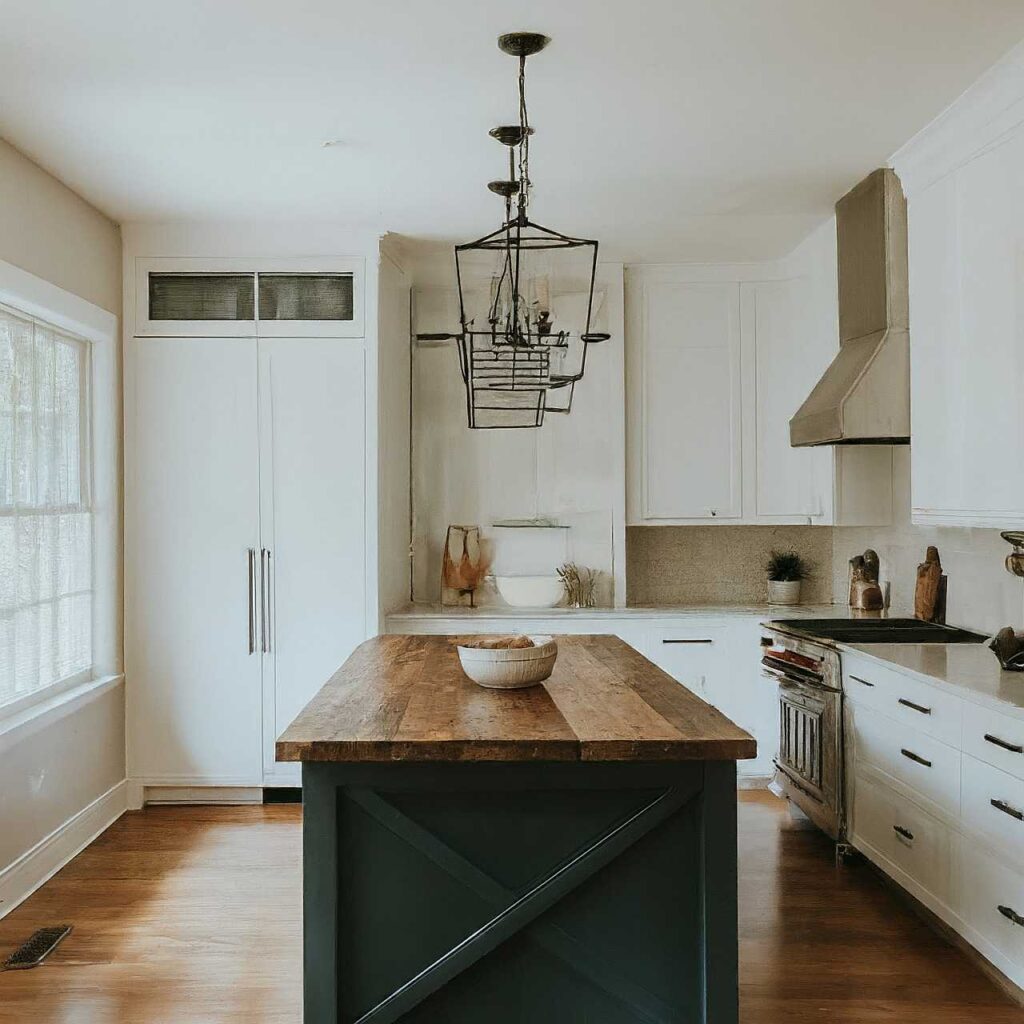
Sustainable Countertop Options
- Bamboo – A renewable and durable material offering a modern look.
- Recycled Glass – Creates a visually striking countertop using repurposed materials.
- Reclaimed Wood – Adds warmth and character while repurposing existing materials.
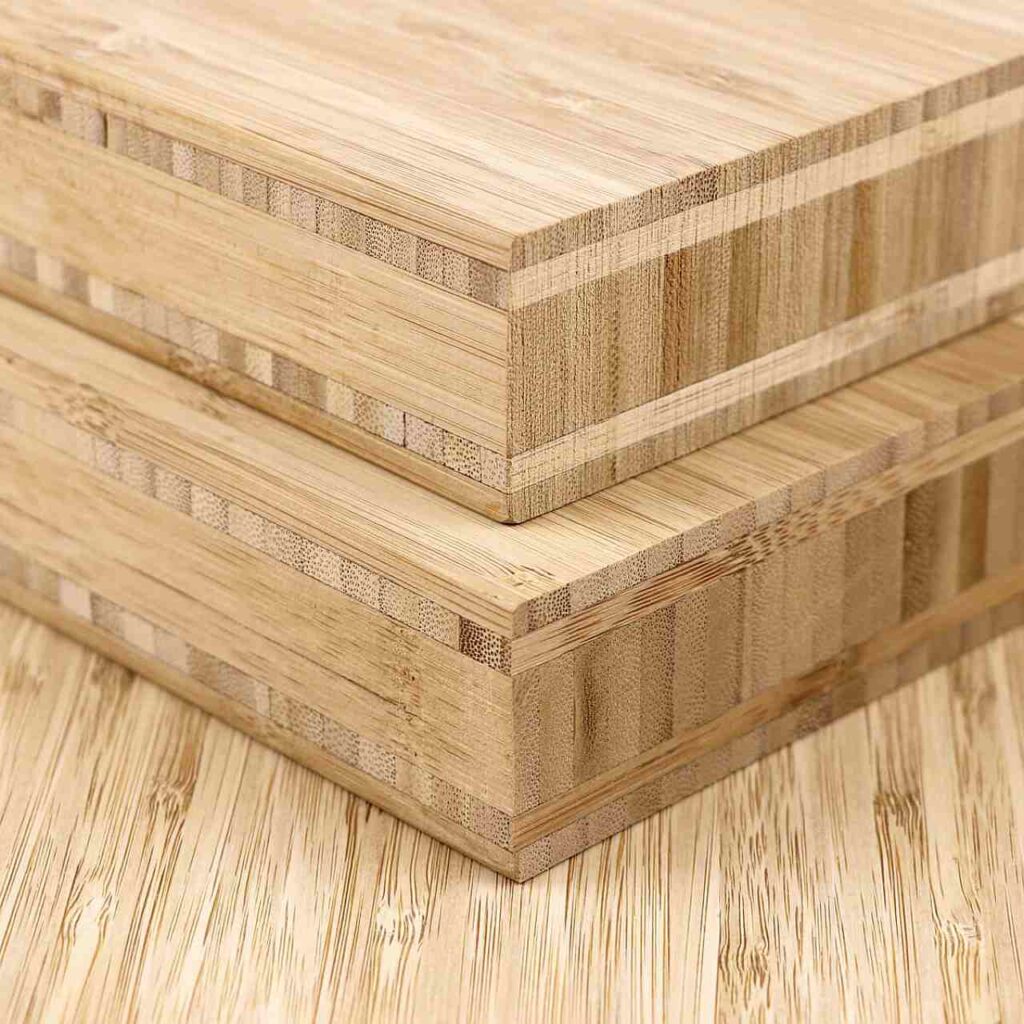
- Concrete – A long-lasting material that can be sustainable when sourced responsibly. Here’s a breakdown of why and when concrete can be sustainable:
- Advantages of Concrete Countertops:
- Durability: Concrete is a highly durable material that can withstand heavy use and last for many years.
- Customizability: It can be molded and shaped into various designs and finishes, making it a versatile option.
- Low maintenance: Concrete countertops typically require minimal maintenance, such as sealing every few years.
- Sustainability Considerations:
- Material sourcing: The sustainability of concrete countertops depends on the source of the materials used. Locally sourced materials and recycled aggregates can reduce the environmental impact.
- Production process: The manufacturing process can have energy and water consumption implications. However, advancements in concrete production have made it more sustainable in recent years.
- Sealing: The sealant used on concrete countertops should be low-VOC to minimize indoor air pollution.
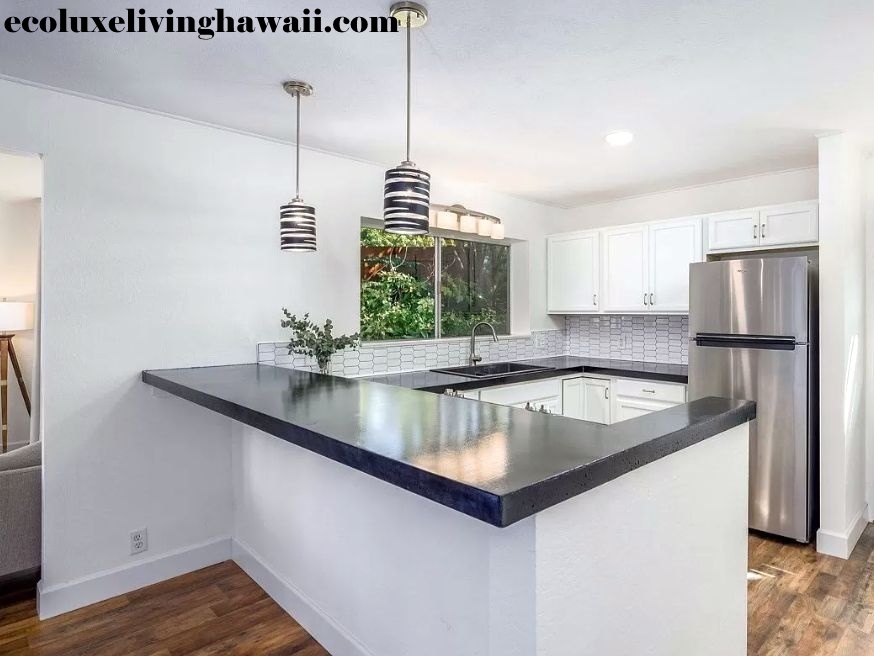
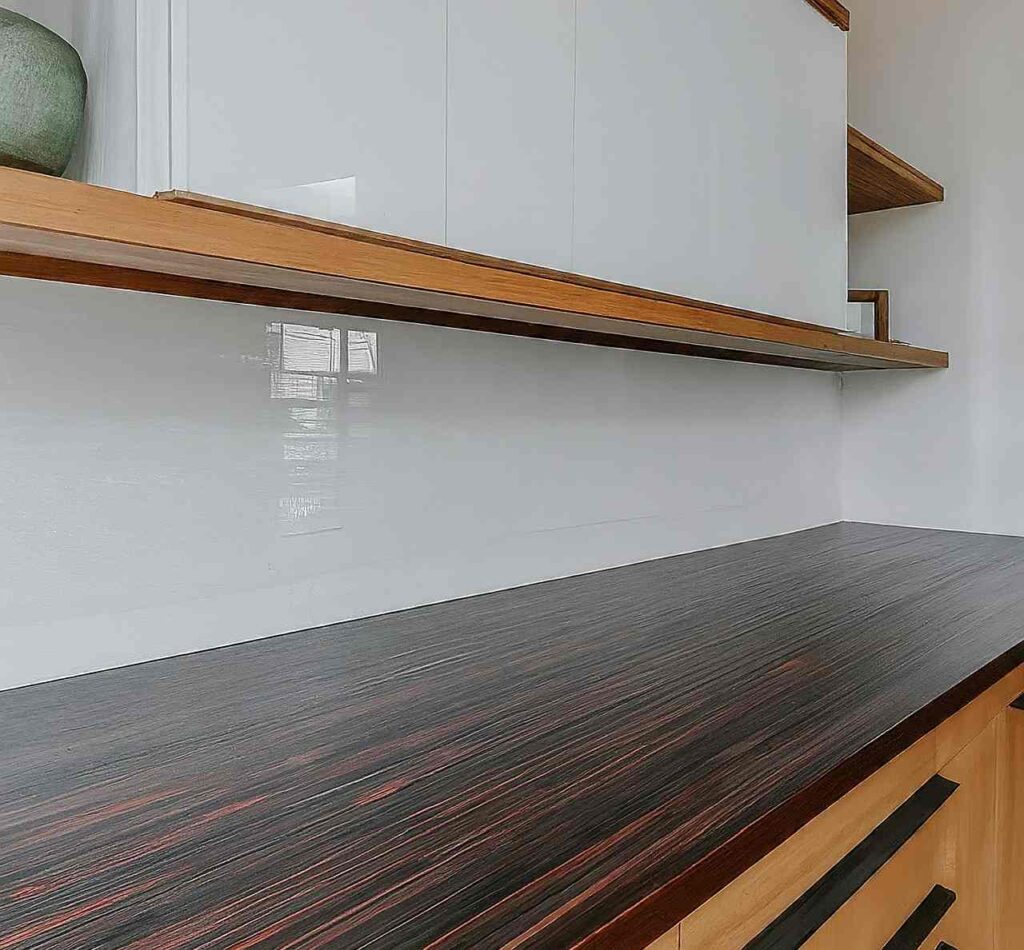
Estimated Costs:
- Bamboo countertops: $40-$100 per square foot
- Recycled glass countertops: $150-$300 per square foot
- Reclaimed wood countertops: $65-$140 per square foot
- Concrete countertops: $50-$150 per square foot
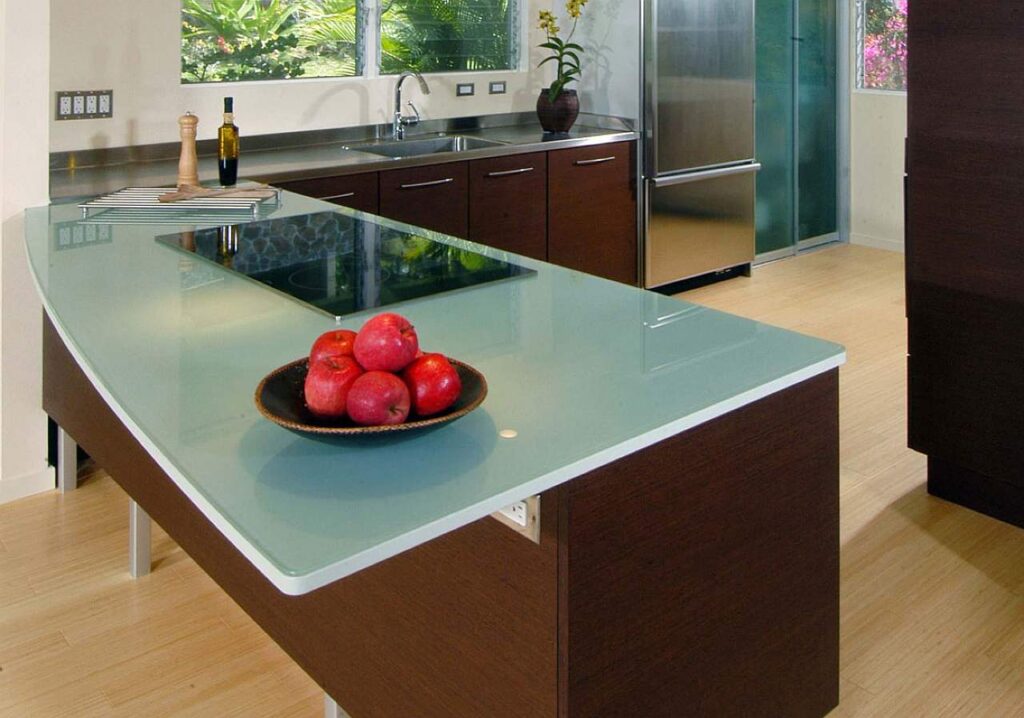
Low-VOC Paints and Finishes
Traditional paints release harmful chemicals known as volatile organic compounds (VOCs). Opt for low-VOC options to improve indoor air quality and minimize environmental harm.
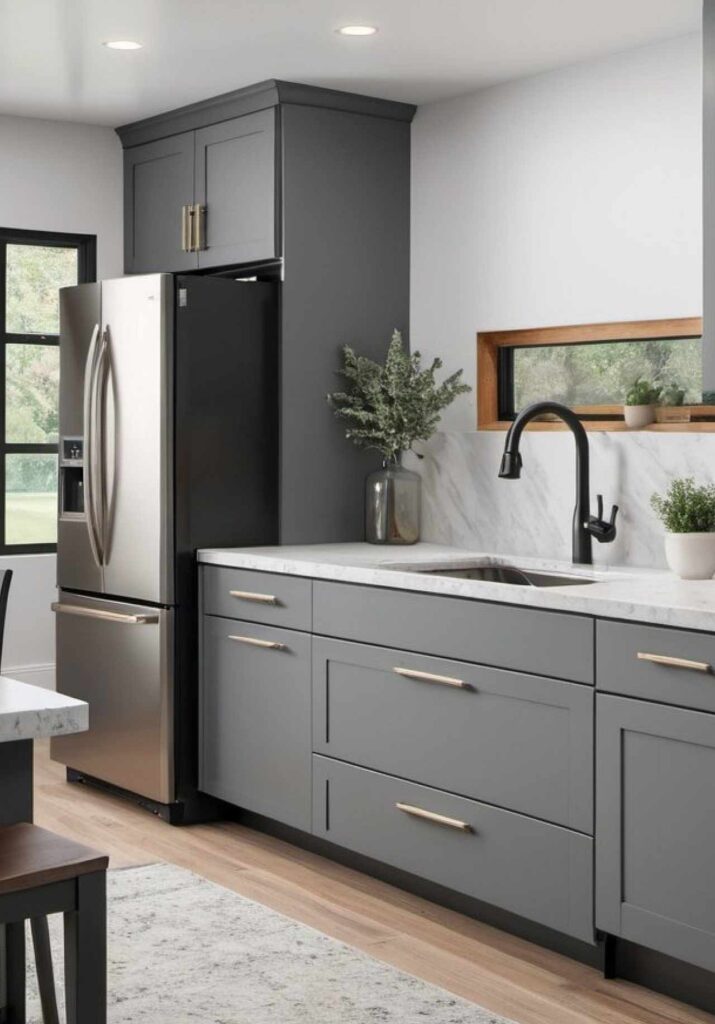
Estimated Costs:
- Low-VOC paint: $40-$60 per gallon
- Low-VOC finishes: $10-$30 per quart
Recycled or Reclaimed Cabinetry and Backsplashes
- Recycled Steel Cabinets – Sleek, durable, and environmentally friendly.
- Reclaimed Wood Cabinets – Adds a rustic touch while reducing waste.
- Recycled Backsplashes – Repurposed tiles or salvaged materials create a unique design.
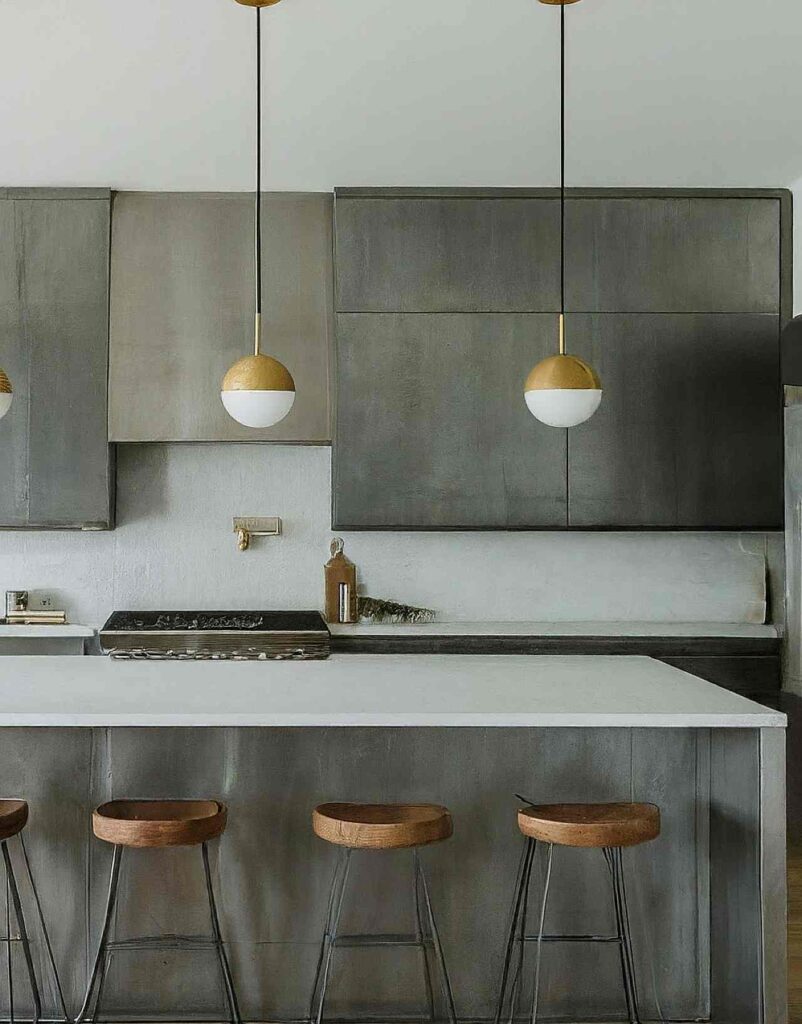
Estimated Costs:
- Recycled steel cabinets: $100-$300 per linear foot
- Reclaimed wood cabinets: $150-$400 per linear foot
- Recycled backsplashes: $30-$70 per square foot
Eco-Friendly Kitchen Design: Maximizing Efficiency and Reducing Waste
Beyond appliances and materials, thoughtful kitchen design plays a crucial role in sustainability. These design tips help reduce energy consumption and waste while creating a visually appealing space.
Maximizing Natural Light and Ventilation
- Large Windows and Skylights – Reduce the need for artificial lighting.
- Proper Ventilation – Ensures good air quality and prevents mold growth.
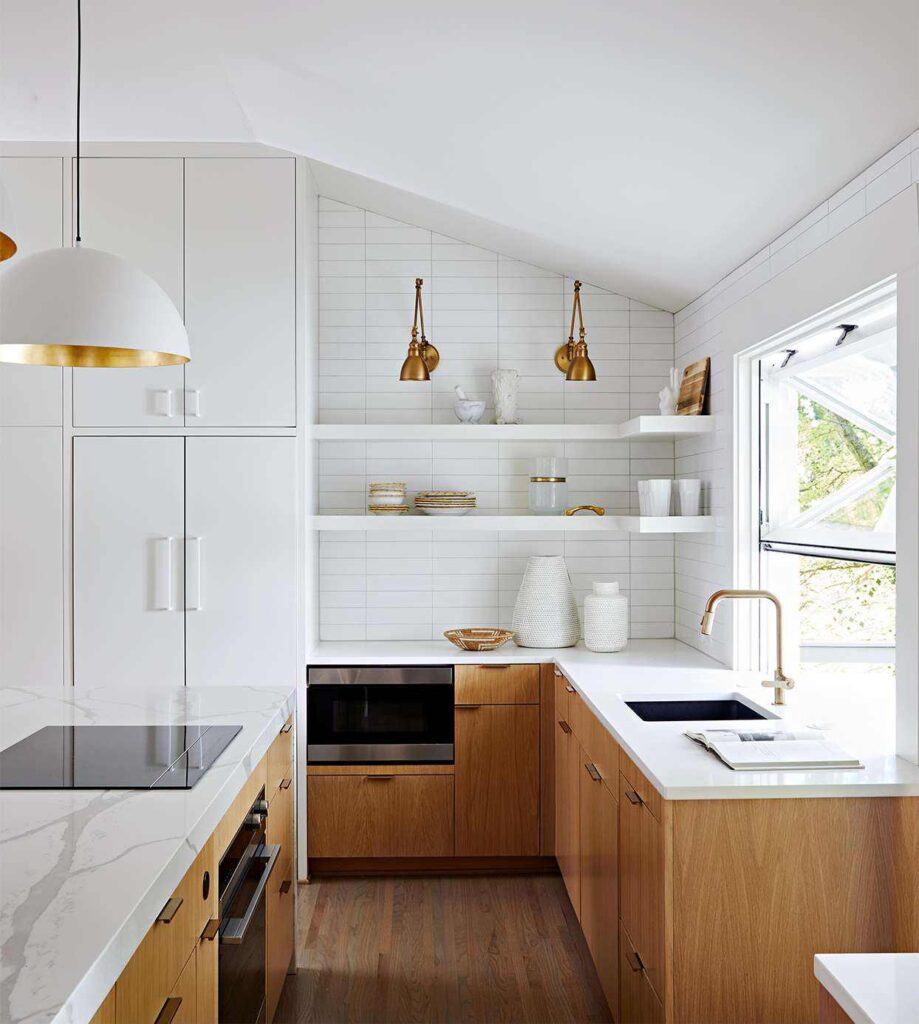
Minimizing Waste
- Composting – Divert food scraps from landfills by setting up a compost bin.
- Recycling Station – Keep designated bins for glass, paper, and plastic.
- Reducing Food Waste – Meal planning and proper storage prevent unnecessary waste.
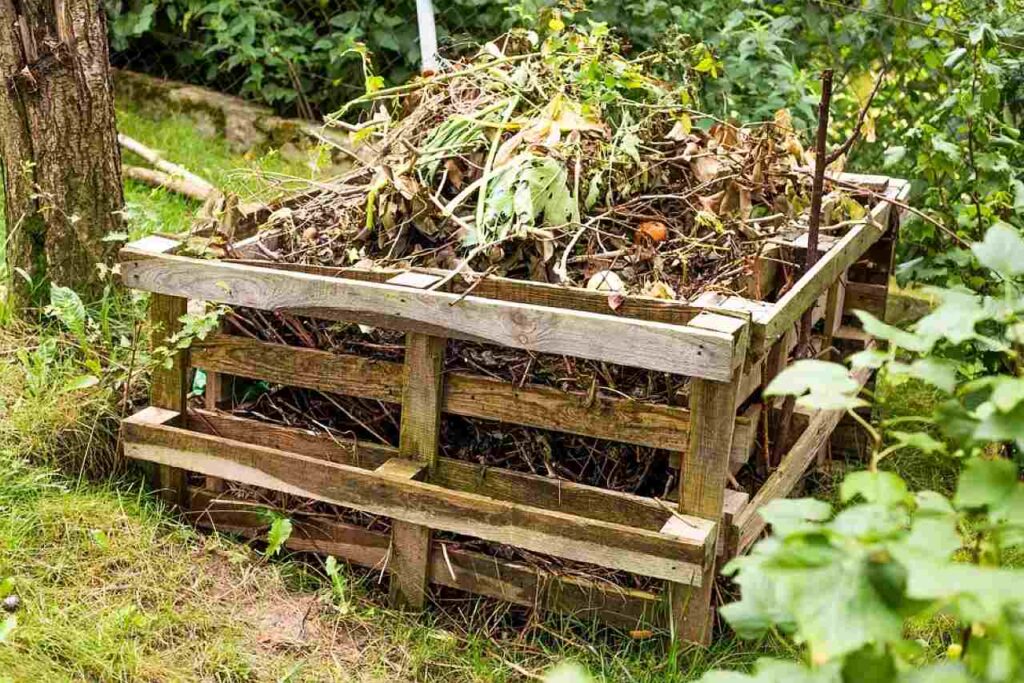
Creating a Sustainable Food System
- Grow Herbs Indoors – Fresh herbs reduce packaging waste and food miles.
- Support Local Farmers – Buying from farmers’ markets supports the local economy and reduces transportation emissions.
- Reduce Meat Consumption – Incorporating more plant-based meals lowers environmental impact.

DIY Eco-Friendly Kitchen Projects
Small changes and DIY projects can make a big difference in creating a greener kitchen.
Building a Compost Bin
- Choose a suitable bin (store-bought or DIY).
- Add a mix of food scraps and dry materials.
- Turn the compost regularly for proper aeration.
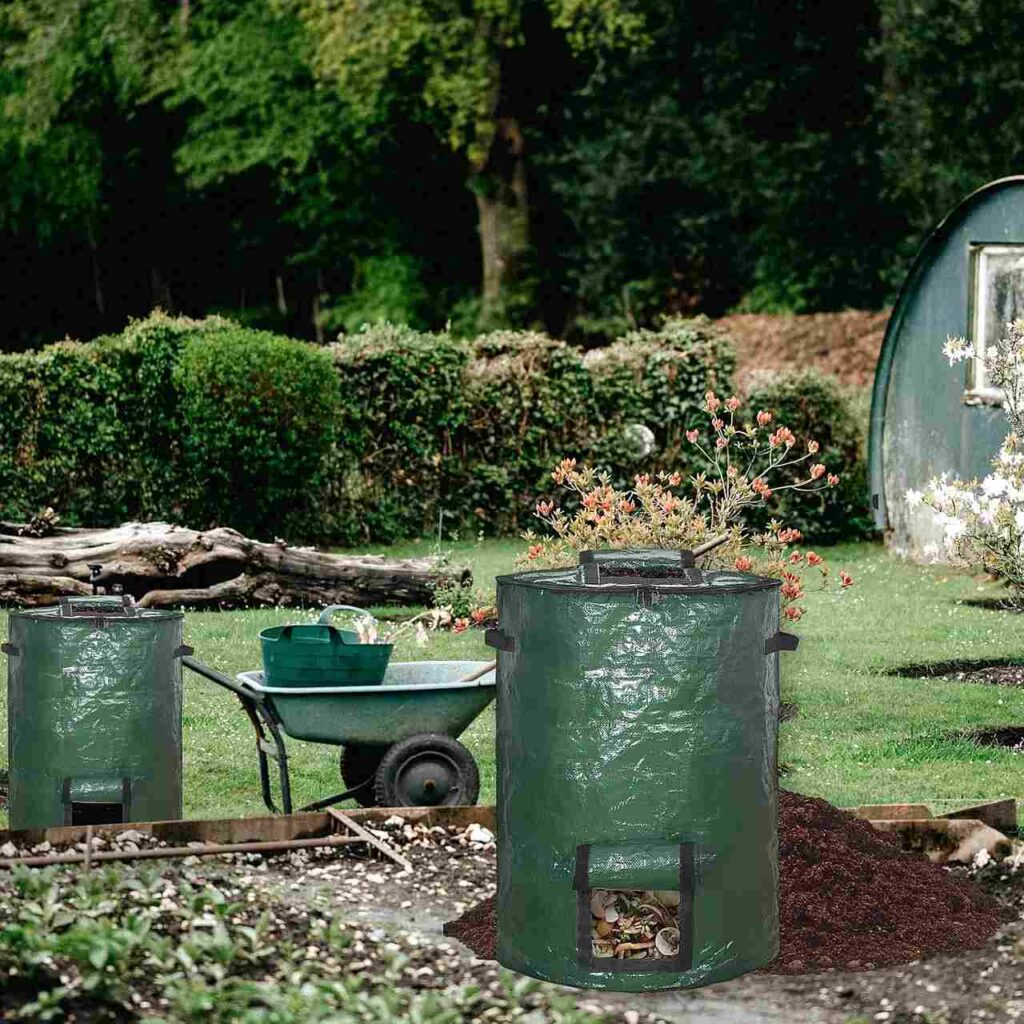
Upcycling Kitchen Items
- Repurpose glass jars for storage.
- Turn old kitchen towels into reusable cleaning cloths.
- Use reclaimed wood to build open shelves or spice racks.
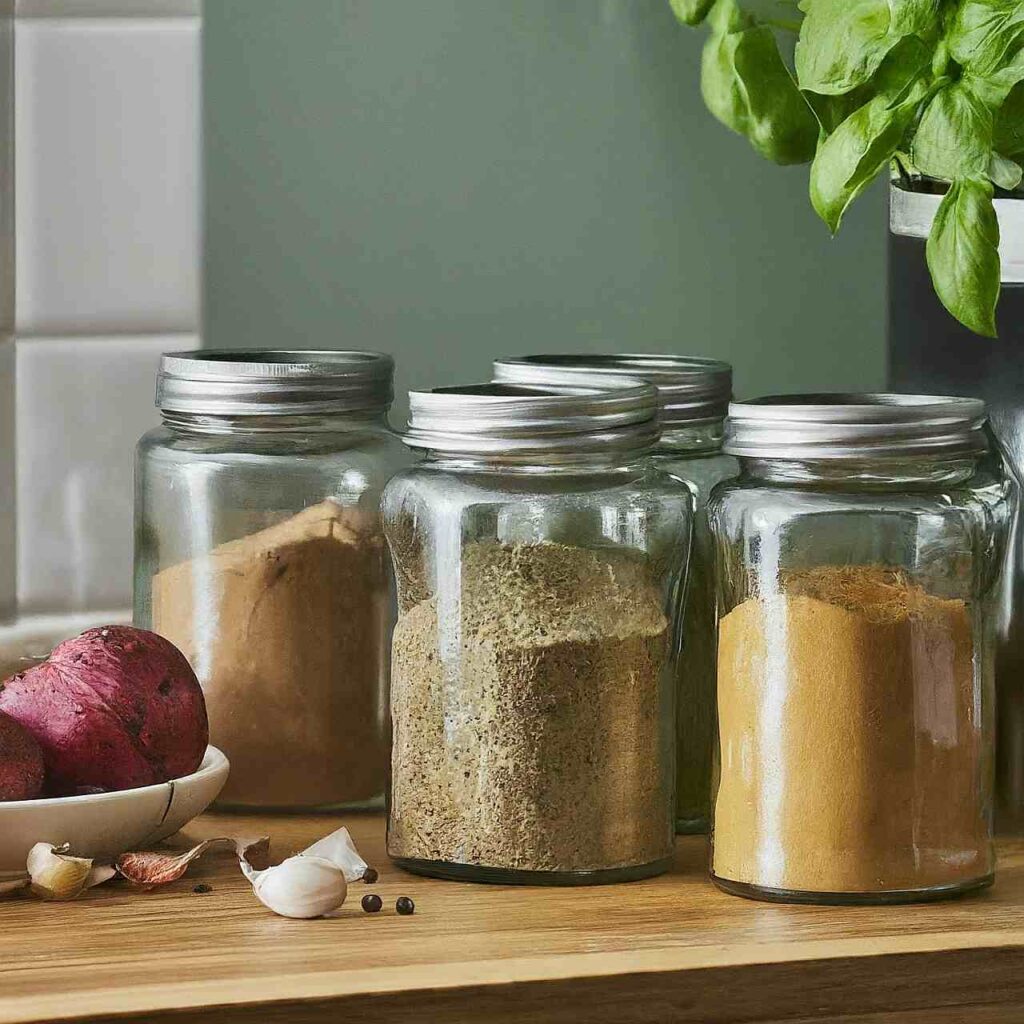
Installing a Rainwater Harvesting System
- Install a rain barrel to collect water from gutters.
- Use collected water for dishwashing or gardening.
- Add a filtration system for cleaner water use.
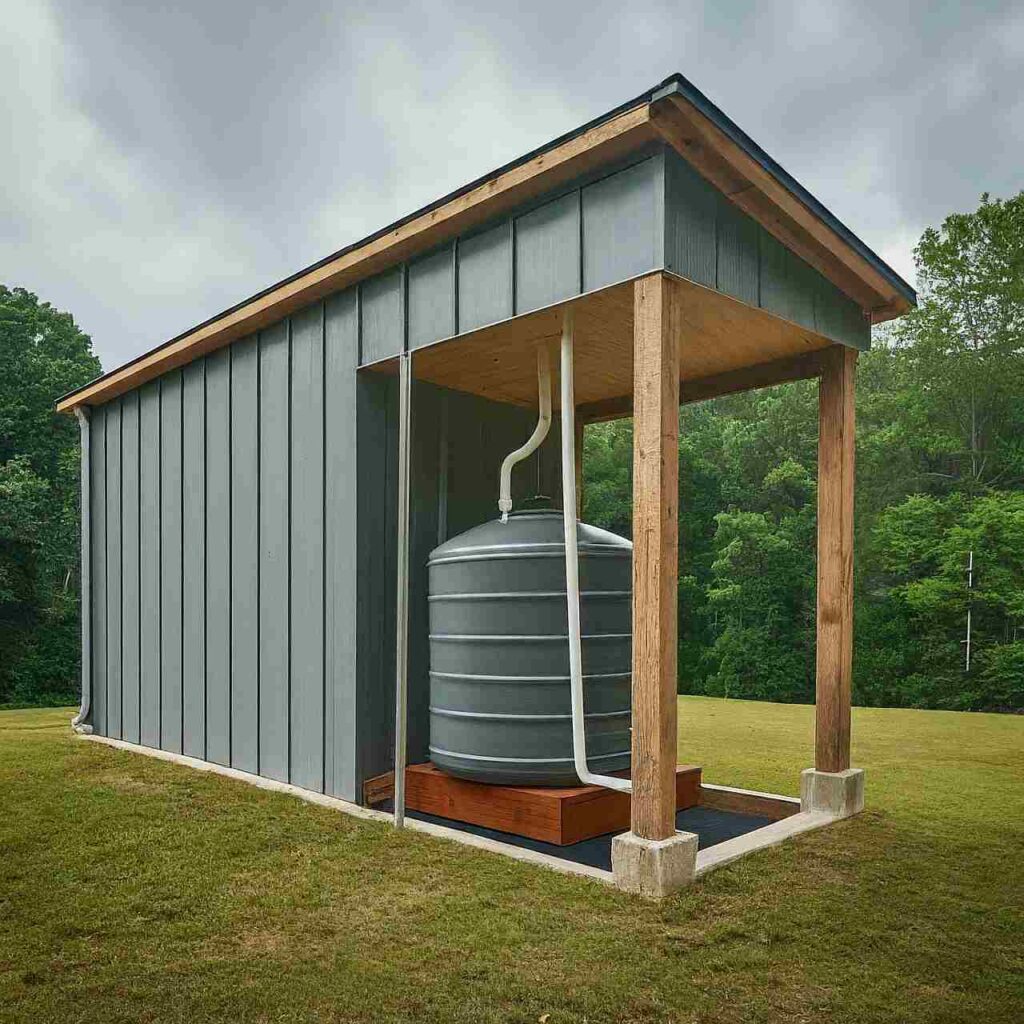
Your Sustainable Kitchen Awaits!
Transitioning to an eco-friendly kitchen is one of the most impactful ways to reduce your environmental footprint while enjoying a beautiful and functional cooking space. From energy-efficient appliances and water-saving fixtures to sustainable materials and smart design choices, every effort contributes to a healthier planet.
Remember, small changes add up. Whether it’s swapping out a single appliance or completely redesigning your kitchen with eco-conscious materials, every step counts. Start your journey towards a greener, more sustainable kitchen today!
As always, mahalo for joining us for this week’s Home Renovation Blog. Be sure to check out all of our home blogs for more tips and tricks for eco-friendly and budget-friendly home renovations. Let us know your thoughts – we’d love to hear from you!


Additional Eco-Friendly Kitchen Resources:
Sustainable Kitchen Resources:
Eco-Friendly Kitchen DIY and Gardening Resources:
